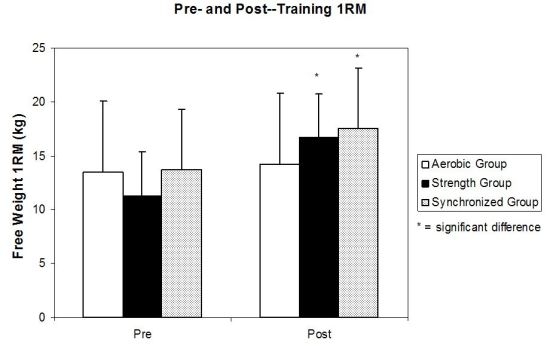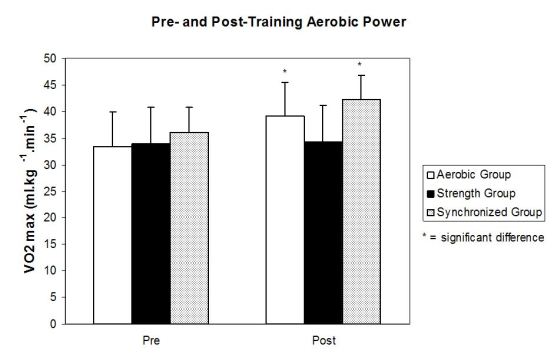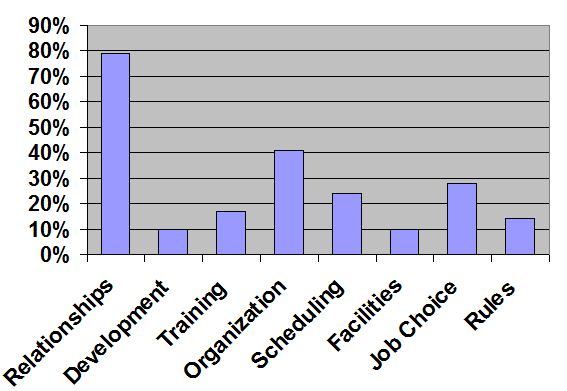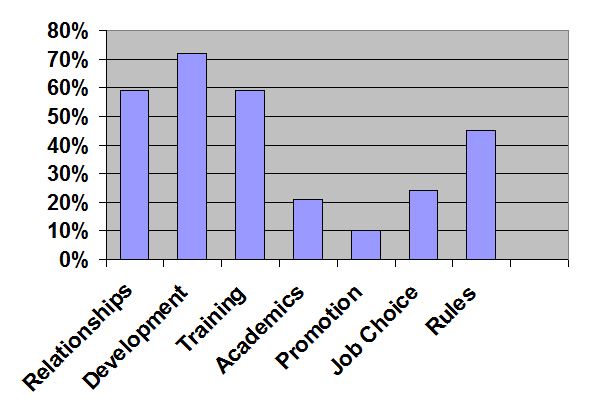Outdoor Recreation Participation: An Application of the Theory of Planned Behavior
Summary
Behavioral factors were investigated in a real outdoor setting, in order to explain one’s intention and actual behavior of participating in outdoor recreational programs. This paper used an extended model of the Theory of Planned Behavior, with the addition of the self-identity variable, aiming to predict intention to participate and then actual participation in a specific outdoor recreation program including activities like: lake canoe/kayaking, orienteering, and archery. Three hundred and twenty-nine adult individuals participated in the study. Manifold correlations existed between all the variables of the study. The results also indicated that perceived behavioral control, role identity, and attitudes toward participation significantly predicted individuals’ intention to participate in the specific outdoor recreation program (R = .597; p < .001). Furthermore, intention toward participation was a significant predictor of the actual behavior (R = .390; p < .001). These findings are discussed with reference to academic literature, the improvement of outdoor activity programs by emphasizing the need of suiting customers’ needs and the practical implications for recreation programs’ provision.
Introduction
The popularity of outdoor recreation has been rapidly increased the last years, as more and more people are realizing the multiple benefits of outdoor recreation participation (Priest & Gass, 1997). It is widely accepted that outdoor recreational programs contribute to participants’ physical and psychological health by offering opportunities for excitement, new challenges, risks, growth and human development, as well as opportunities for social interaction.
A variety of theoretical approaches have been applied for the study of outdoor recreation participation, with the objective to identify the factors that facilitate or limit participation in outdoor recreational activities (Holden, 2003; Kyle, Graefe, Manning & Bacon, 2003). In the present study, we used an extended version of the Theory of Planned Behavior (TPB) with the inclusion of the role identity variable, aiming to test the degree to which intention to participate as well as actual participation can be predicted by the elements of the theory.
According to the TPB (Ajzen, 1988; Ajzen & Madden, 1986), human behavior is a function of an individual’s intention to perform the behavior in question. In its turn, intention is determined by a combination of three conceptually independent factors: (a) attitude toward the specific behavior, (b) subjective norms, and (c) perceived behavioral control. More specifically, the model proposes that behavior is a function of beliefs, which are related to the behavior. Attitudes are defined as one’s positive or negative predisposition towards a specific behavior, and determined by an individual’s behavioral beliefs toward the behavior (Ajzen, 1988). On the other hand, subjective norm expresses the social pressure that is placed on the individual to perform the specific behavior. Perceived behavioral control has been introduced to enhance the prediction of behaviors in which volitional control may be incomplete (Ajzen, 1988). Irrespectively of a person’s intention, there may be some obstacles preventing him / her from caring out the behavior. These obstacles may be internal factors, such as, skills, abilities, knowledge, and adequate planning, as well as, external factors, such as, time, opportunity, and cooperation with other people (Ajzen & Madden, 1986), and expresses individual beliefs about the ease or difficulty in performing a specific behavior. The TPB postulates that perceived behavior control influences behavior both directly and indirectly through an independent effect on behavioral intention (Ajzen & Madden, 1986). The more it is perceived that the behavior in question is not under control, the more it is expected that a direct link, between perceived behavioral control and behavior, not mediated by intention, will be present.
In the context of outdoors, the more positive attitude an individual holds, the higher the societal pressure placed on him. Furthermore, when the behavior is perceived to be controllable, behavioral intentions are more likely to be positive. Participation in outdoor recreation programs has unique characteristics, since it requires for individuals to invest time, effort and energy. Furthermore, there are many internal (e.g., injury risk and perceived fitness and skill levels) and externals factors (e.g., weather conditions, transportation, availability of opportunities) that limit individuals’ choices and make perceived behavioral control an important variable (Godin, 1993; Michels & Kugler, 1998).
Several researchers applied the theoretical framework of planned behavior to examine intention to participate in sporting activities (Courneya & Friedenreich, 1999; Papaioannou & Theodorakis, 1996; Theodorakis, 1992; 1994). In most of the studies, attitudes toward a behavior appeared to be a stronger determinant of intention (Biddle, Goudas & Page, 1994), whereas subjective norm was a weaker one (Bourdreau, Godin, Pineau, & Bradet, 1995; Courneya & McAley, 1995; Dzewaltowski, 1989). These results were not supported by studies using children and teenagers (Theodorakis, 1992).
While there have been plenty of studies that used the TPB, very few researchers applied the model in the context of outdoor recreational participation, and especially in a real-life outdoor setting. Ajzen and Driver (1991; 1992), who conducted two of the very few studies, used a laboratory setting, which limits the application of their findings. In these two studies, Ajzen and Driver (1991; 1992) reported that individuals’ beliefs and active participation in outdoor activities, such as running, biking, climbing and sailing, were not strong determinants of one’s intention towards participation in these activities.
Theodorakis (1994) extended the theoretical model of planned behavior, by adding a new variable, named role identity. The entry of the role identity variable was based on the theories of ‘identity’ and ‘symbolic interaction’ (Burke, 1980). It was first used in a study conducted by Theodorakis (1994), who attempted to predict adolescent women’s participation in a recreational exercise program. Role identity pertains to an individual’s behavior which, appears to be in accordance with a set way, as it is part of the person’s identity, his/her role within the society, as well as it is an element of him/herself. Theodorakis (1994) concluded that the Planned Behavior model was slightly more successful in predicting exercise behavior with the inclusion of the role identity variable. This variable has not been used by previous studies in the context of recreation participation. We argue that it is meaningful in this setting, considering that behavior / participation in outdoor recreational activities can be developed through an individual’s role.
In the present research, we attempted to investigate how behavioral factors influence an individual’s decision to participate in an outdoor recreational program, which included lake canoe/kayak, orienteering, and archery. The Planned Behavior Model enhanced with the role identity variable provided the theoretical framework for our investigation.
Methodology
The data were collected in two stages:
a) Data collection about intention to participate in the outdoor program In order to recruit participants, a series of presentations were made by the researchers in a University campus targeting University students, in a local fitness clubs, and in a local cultural association. Three hundred and twenty nine (N=329) individuals attended these presentations. They were informed about the program, the place, the activities included (lake canoe/kayak, orienteering, and archery), and the dates, and were invited to participate. They also completed the questionnaire with the elements of the TPB, and they were asked to report if they intend to participate in the programs.
b) Data collection about actual participation One hundred and eighty seven (N=187) individuals of those reported intention to participate (56%) showed up at Lake Plasteera, where the program took place. This was the sample of the second stage of the study.
Assessment of Variables
The variables from the planned behavior model were based on the original work of Ajzen and Madden, (1986), modified for the Greek language and culture by Theodorakis (1992; 1994), and re-modified by the researchers for the purposes of this research project.
Attitude towards Participation, in outdoor activities was assessed with one item: “For me to participate in next week’s excursion at Lake Plasteera which, includes canoe, archery, and orienteering activities, is..” Responses were given on a 7-point scale, using ten (10) bipolar adjectives (e.g., good-bad, healthy-unhealthy, interesting -boring, useful – of no-use, pleasant – unpleasant, wise – foolish). Cronbach’s reliability coefficient was .72.
Subjective Norms, were determined with four items. Example: “If I participate in next week’s excursion at Lake Plasteera which, includes canoe, archery, and orienteering activities, individuals who are important to me.”. Responses were given on 7-point scales, ranging from ‘will disagree’ to ‘will agree’. Cronbach’s a reliability coefficient was .81.
Perceived Behavioral Control. The total score of three items was used to estimate participants’ perception of control on the specific behavior. Examples: “If I wanted to, I could participate in next week’s excursion at Lake Plasteera which, includes canoe, archery, and orienteering activities”, “How much control do you exert over your participation in next week’s excursion at Lake Plasteera which, includes canoe, archery, and orienteering activities?”. Participants’ responded on 7-point scales, ranging from ‘likely’ to ‘unlikely’ and ‘complete control’ to ‘no control’, respectively. Cronbach’s a coefficient was .73.
Role Identity. This variable was added to the model by Theodorakis (1992). Seven items were used to measure role identity. Examples: “It’s in my character to participate in next week’s excursion at Lake Plasteera which, includes canoe, archery, and orienteering activities”, “Generally, I am the type who is going to participate in next week’s excursion at Lake Plasteera which, includes canoe, archery, and orienteering activities”. Responses were given on a 7-point scale, ranging from ‘strongly agree’ to ‘strongly disagree’. Cronbach’s a was .86.
Behavioral Intention. The mean score of three items estimated participants’ intention to exhibit the behavior of participating. Example: “I will try to participate in next week’s excursion at Lake Plasteera which, includes canoe, archery, and orienteering activities.” Responses were given on a 7-point scale, with endpoints labeled ‘possible’ and ‘impossible.’ Cronbach’s a for this subscale was .91. Actual Behavior, was measured by actual participation in the program.
Results
Descriptive statistics are presented in Table 1. Pearson product-moment correlation coefficients were computed for all variables used in this study. Table 2 shows the Pearson Product-Moment correlations among all variables.
Table 1
Descriptive statistics and reliability analysis for the planned behavior scales.
| Number of items | Mean | SD | Min | Max | Coefficient alpha | |
| Attitudes toward behaviorSubjective norms
Role identity Perceived behavior control Intention toward behavior |
104
7 3 3 |
5.26.1
5.1 5.5 5.6 |
.57.85
1.1 1.0 1.5 |
4.003.25
1.57 1.67 1.00 |
7.007.00
7.00 7.00 7.00 |
.72.81
.86 .73 .91 |
Table 2
Pearson Product-Moment Correlation Coefficients among variables.
| Variables | 1 | 2 | 3 | 4 | 5 | |
| 1. Intention Toward Behavior | ||||||
| 2. Attitudes Toward Behavior | .431** | |||||
| 3. Subjective Norm | .237** | .240** | ||||
| 4. Perceived Behavioral Control | .536** | .465** | .184** | |||
| 5. Role Identity | .427** | .526** | .342** | .392** | ||
| 6. Behavior | .390** | .137* | .057 | .265** | .206** |
* p < .01, ** p < .001
Significant correlations existed between intention toward the behavior of participation and the following variables: attitude towards participation (r = .431, p < .001), subjective norm (r = .237, p < .01), perceived behavioral control (r = .536, p < .001), role identity (r = .427, p < .001), and the actual behavior of participation (r = .390, p < .001). Actual behavior of participation also significantly correlated with attitudes towards the behavior (r = .137, p < .01), perceived behavioral control (r = .265, p < .001), and role identity (r = .206, p < .001). Moreover, significant correlations existed between perceived behavioral control and attitudes, perceived behavioral control and role identity, attitudes and role identity, subjective norm and role identity.
Prediction of Intention
Stepwise multiple regression analysis was used to predict intention for participation. The variables from the planned behavior model served as predictors (i.e., independent variables). The results are presented in Table 3. The analysis showed that perceived behavioral control, role identity factor, and attitudes toward the behavior were significant predictors of participants’ intention towards the behavior. More specifically, in step 1, perceived behavioral control contributed to the prediction, R = .53, (F = 132.1, p < .001). In step 2, role identity increased predictability to .58, (F = 85.1, p < .001). In step 3, attitudes toward behavior further increased the prediction to .59 (F = 60.0, p < .005). Hierarchical regression analyses were also performed. The results matched the stepwise analysis.
Table 3.
Stepwise Multiple Regression Analysis for Prediction of Intention.
| Variables | R | F Change | p |
| 1. Perceived Behavioral Control2. Role Identity
3. Attitude Toward Behavior 4. Subjective Norm |
.53.58
.59 .59 |
132.1285.17
60.07 .373 |
.001.001
.005 .542 |
Prediction of Behavior
Stepwise multiple regression analysis was also used to predict actual behavior of participation. The results of this analysis are presented in Table 4. In step 1, intention toward the behavior contributed to the prediction, R = .39 (F = 58.6, p < .001). Perceived behavioral control, attitudes toward the behavior, and role identity did not contribute to the prediction beyond intention. Once again, a hierarchical regression analysis was performed and results matched the stepwise analysis.
Table 4.
Stepwise Multiple Regression Analysis for Prediction of Behavior.
| Variables | R | F Change | p |
| 1.Intention Toward Behavior2.Perceived Behavioral Control
3.Attitudes Toward Behavior 4.Role Identity Excluded Variables 1. Subjective Norm |
.39.39
.40 .40 |
58.61.6
1.2 1.2 |
.001.198
.266 .264 |
Discussion
Explaining participation in outdoor recreational activities appears to be a complex task. The primary purpose of this study was to predict intention towards participation as well as actual participation in outdoor recreational activities. Role identity was included as an extra variable in an effort to strengthen the prediction of intention and actual participation.
The results provided support for the applicability of the TPB in the context of outdoor recreation. First of all, actual behavior was significantly predicted by participants’ intention. It should, however, be noted that the prediction was not very strong. Almost half of the individuals that reported intention to participate in the activity did not turn up, and did not participated in the program. This finding shows the difficulties in predicting outdoor recreation participation. Individuals reported intention to participate but for some reasons did not. It is of theoretical and practical importance to find out these reasons. This is where constraints research could give answers and clarify the lack of correspondence between intention and behavior (Alexandris & Carroll, 1997a). Future research should be conducted in this direction. As previously discussed, outdoor recreation participation requires considerable investment by individuals in terms of time, effort, and resources. It is subsequently expected that individuals should overcome a variety of constraints in order to reach to participation.
These arguments are supported by the important role of perceived behavioral control in predicting intention to participate. It was shown to be the most important contributor. This is in line with the majority of the previous studies in sport and exercise settings (e.g., Ajzen & Driver 1992; Courneya & Friedenreich, 1999; Dzewaltowski, 1989; Michels & Kugler, 1998; Papaioannou & Theodorakis, 1996; Theodorakis, 1994) that reported perceived behavioral control as the most important determinant of intention to participate in sport and exercise activities. Once again, it is of practical important to further explore the personal meaning of this variable. For some individuals it might mean perceived constraints (e.g., perceived lack of time), while for some others it might mean real constraints (e.g., lack of financial resources). The meaning of perceived behavioral control is personal but it is also contextual. It is expected that different factors will limit individuals’ participation in exercise activities in comparison with outdoor activities.
The results also supported the inclusion of role identity within the model since it significantly predicted intention to participate. As previously discussed, role identity refers to an individual’s behavior, which appears to be in accordance with a set of specific images and an individual’s role within the society. It is an interesting finding, since role identity has not been included in previous studies in the area of outdoor recreation. It clearly has a personal meaning, and further research is required in order to clarify how this identity is formed, and what are the factors that influence it. Positioning outdoor recreation based on customers’ self-identity might be a good suggestion for those working on the promotion and marketing of the programs. Subsequently, further clarifying the role of identity and its meaning is of practical importance, since it could help program providers to design more effective marketing strategies.
Attitude was the last variable that contributed in the prediction of intention. Individuals with more positive attitudes are more likely to express a positive intention towards participation in outdoor recreational programs. This supports findings of previous studies in sport setting (Michels & Kugler, 1998; Theodorakis, 1994). Attitudes are usually formed on the basis of previous experience or by information that is provided by formal (e.g.,advertising) and informal (e.g., friends) sources.
Finally, subjective norm did not have a significant role in explaining one’s intention to participate in outdoor activities. Once again, this finding is in line with previous research. The majority of previous studies (Boudreau at al., 1995; Courneya & McAuley, 1995; Dzevaltowski., 1989; Godin, 1993) did not report significant relationships between subjective norm and intention to participate. Ajzen & Driver (1992), and Dzewaltowski, (1989), argued that social influence-pressure has a small effect on one’s intention to exercise. It seems however that the age of the participants might play a significant role. We used a sample of adult individuals, where the influence of the social environments seems not to be important. Previous studies that used adolescents, however, led to different results. Theodorakis (1992), for example, found that subjective norm was the stronger predictor of intention to participate in sport activities among young students.
In conclusion, the present study applied the TPB in an outdoor recreation setting. The results provided support for the value of the theory. They also indicated the difficulties in predicting actual participation in outdoor recreation based on intentions to participate. Future research should focus on the identification of the factors that intervene between intention and actual participation. Perceived behavioral control, attitudes towards outdoor recreation and role identity were the three variables that significantly contributed to the prediction of intention.
References
- ALEXANDRIS, K. AND CARROLL, B. (1997a). An analysis of leisure constraints based on different recreational sport participation levels: Results from a study in Greece. Leisure Sciences, 19: 1-15.
- AJZEN, I. AND MADDEN, T. J. (1986). Prediction of goal-directed behavior: Attitudes and perceived behavioral control. Journal of Experimental Social Psychology, 22: 453-474.
- AJZEN, I. AND DRIVER, B. L. (1991). Prediction of leisure participation from behavioral, normative, and control beliefs: An application of the theory of Planned Behavior. Leisure Sciences, 13:185-204.
- AJZEN, I. AND DRIVER, B. L. (1992). Application of the theory of Planned Behavior to leisure choice. Journal of Leisure Research, 24:207-224.
- BIDDLE, S., GOUDAS, M. AND PAGE, A. (1994). Social-psychology predictors of self-reported actual and intended physical activity in a university workforce sample. British Journal of Sport Medicine, 28: 160-163.
- BOUDREAU, F., GODIN, G., PINEAU, R. AND BRADET, R. (1995). Health risk appraisal in occupational setting an dits impact on exercise behavior. Journal of Occupational and Environmental Medicine, 37: 1145-1150.
- BURKE, P. J. (1980). The self: Measurement requirements from an interactionist perspective. Social Psychology Quarterly, 43: 18-29.
- COURNEYA, K. S. AND FRIEDENREICH, C. M. (1999). Utility of the theory of planned behavior for understanding exercise during breast cancer treatment. Psychooncology, 8:112-122.
- COURNEYA, K. S. AND MC ALLEY, E. (1995). Cognitive mediators of the social influence-exercise adherence relationship; a test of the theory of planned behavior. Journal of Behavioral Medicine, 18:499-515.
- DZEWALTOWSKI, D. A. (1989). Toward a model of exercise motivation. Journal of Sport & Exercise Psychology, 11: 251-269.
- KYLE, G., GRAEFE, A., MANNING, R. AND BACON, J. (2003). An examination of the Relationship between Leisure Activity Involvement and Place Attachment among Hikers Along the Appalachian Trail. Journal of Leisure Research, 35: 249-273.
- GODIN, G. (1993). The theories of reasoned action and planned behavior: Overview of findings, emerging research problems, and usefulness for exercise promotion. Journal of Applied Sport Psychology, 5: 141-157.
- HOLDEN, A. (2003). Investigating trekkers’ attitudes to the environment of Annapurna, Nepal. Tourism Management, 24: 341 – 344.
- MICHELS, T. C. AND KUGLER, J. P. (1998). Predicting exercise in older Americans: using the theory of planned behavior. Military Medicine, 163: 524-529.
- PAPAIOANNOU, A. AND THEODORAKIS, Y. (1996). A test o three models for the prediction of intention for participation in physical education lessons. International Journal of Sport Psychology, 2: 383-399.
- PRIEST, S. AND GASS, M. (1997). Effective Leadership in Adventure Programming. Champaign, IL: Human Kinetics.
- THEODORAKIS, Y. (1992). Prediction of athletic participation: A test of planned behavior theory. Perceptual and Motor Skills, 74: 371-379.
- THEODORAKIS, Y. (1994). Planned behavior, attitude strength, role identity, and the prediction of behavior. The Sport Psychologist, 8: 149-165.




